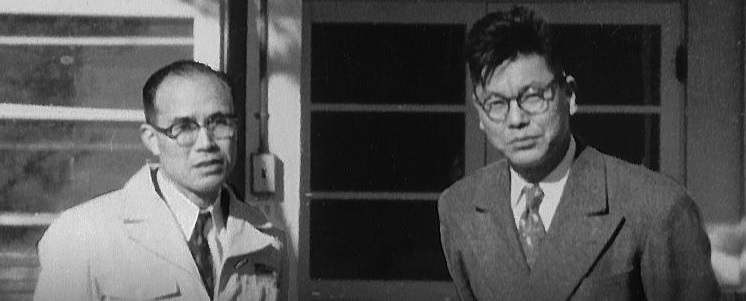Honda Motor Co., Ltd. is a Japanese multinational corporation that was founded in 1948 by Soichiro Honda and Takeo Fujisawa. The company has its headquarters in Tokyo, Japan, and is known for its wide range of products, including automobiles, motorcycles, and power equipment. Honda has established itself as one of the most popular and reputable automotive companies in the world, with a strong brand identity and a reputation for quality, reliability, and innovation.
Honda has a long and impressive history of technological innovation and leadership in the automotive industry. From the early days of its founding, the company has been focused on developing cutting-edge technologies and improving the performance of its products. This commitment to innovation has led to a number of significant achievements for Honda, including the development of the first Japanese mass-produced car, the Honda S500, in 1963. In the years since, Honda has continued to innovate and has developed a reputation as a leader in the areas of fuel efficiency, safety, and environmental sustainability.
Today, Honda is one of the world’s largest producers of automobiles and motorcycles, with a strong presence in markets around the world. The company operates a number of manufacturing plants and research and development facilities, and employs over 200,000 people globally. Honda’s commitment to innovation and quality has helped it to establish a loyal customer base, and the company continues to be recognized for its contributions to the automotive industry and to society as a whole. In this article, we will explore the history and achievements of Honda, as well as the challenges and opportunities that lie ahead for this iconic company.
Founding History of Honda
Honda was founded in 1948 by Soichiro Honda and Takeo Fujisawa, two men with a vision to revolutionize the world of transportation. Soichiro Honda was a self-taught engineer and businessman who had a passion for automobiles and motorcycles. Takeo Fujisawa was a skilled marketer and businessman who had experience in the automotive industry.

The two men met in the 1930s when Honda was running his own auto repair shop and Fujisawa was working for a major Japanese auto parts supplier. They soon became friends and began discussing their shared interest in creating a new kind of transportation company.
After World War II, Japan was in a period of rebuilding and economic recovery, and there was a growing demand for affordable, reliable transportation. Honda and Fujisawa saw an opportunity to meet this demand by creating a new kind of motorcycle that was both affordable and efficient.
In 1948, they established the Honda Motor Company, with the goal of building high-quality, low-cost motorcycles that could be used by the average person. The company’s first motorcycle, the Honda Cub, was launched in 1958, and it quickly became a popular choice among consumers. By 1964, Honda had become the world’s largest motorcycle manufacturer, with over 3 million motorcycles produced that year.
Over the years, Honda expanded its business to include automobiles, power equipment, and other products. The company’s first car, the T360 mini-truck, was launched in 1963, and Honda quickly gained a reputation for producing innovative, high-quality automobiles.
Today, Honda is a global leader in the automotive industry, with a strong reputation for quality, innovation, and environmental sustainability. The company continues to be guided by the principles of its founders, Soichiro Honda and Takeo Fujisawa, and is committed to creating products that improve people’s lives and make the world a better place.
Major Milestones of Honda Motor Company
Honda has achieved several major milestones throughout its history. Here are some of the most significant:
Launch of the Honda Cub (1958): The Honda Cub was designed by Honda founder Soichiro Honda to be a simple and reliable motorcycle that could be used by anyone. Its success helped establish Honda as a leading motorcycle manufacturer and enabled the company to expand into other markets.
Entry into the U.S. market (1959): Honda began selling its motorcycles in the United States in 1959, starting with the Honda Super Cub. The company’s motorcycles were initially met with skepticism from American consumers, but their reliability and affordability eventually won over many customers.
Introduction of the Honda Civic (1972): The Honda Civic was Honda’s first small car and was designed to compete with the Toyota Corolla and other small cars. Its success helped establish Honda as a major player in the automotive industry and set the stage for the company’s expansion into other markets.
Launch of the Acura brand (1986): The Acura brand was created to give Honda a foothold in the luxury automobile segment. The brand’s first models, the Acura Legend and Acura Integra, were well-received by critics and consumers and helped establish Acura as a major player in the luxury car market.
Introduction of the Honda Accord Hybrid (2004): The Honda Accord Hybrid was designed to be more fuel-efficient than other midsize sedans and used a V6 engine with Honda’s Integrated Motor Assist system. The car received critical acclaim for its performance and fuel efficiency.
Launch of the HondaJet (2015): The HondaJet is a small business jet that was designed to be efficient, quiet, and comfortable. It features an advanced aerodynamic design and is powered by two GE Honda HF120 turbofan engines. The HondaJet has received several awards for its innovative design and is considered a major milestone in Honda’s expansion into aviation.
Introduction of the Honda Clarity Fuel Cell (2016): The Honda Clarity Fuel Cell is a hydrogen-powered vehicle that emits only water vapor. It is part of Honda’s efforts to reduce carbon emissions and promote sustainability, and is currently available for lease in select markets in California.
These milestones demonstrate Honda’s commitment to innovation and quality, and its willingness to take risks and push the boundaries of what is possible. As Honda continues to expand into new markets and develop new products, it will undoubtedly continue to achieve new milestones and cement its place as one of the world’s leading companies.
Entry of Honda in markets in various regions
Honda has entered various regions around the world through a combination of strategies including joint ventures, acquisitions, and greenfield investments.
North America: Honda first entered the North American market in 1959, when it established American Honda Motor Co. in California. The company initially focused on selling motorcycles, but later expanded into the automobile market with the introduction of the Honda Civic in 1973. Since then, Honda has become a major player in the North American automotive industry, with a strong reputation for quality and innovation.
Europe: Honda’s entry into the European market was a gradual process, beginning in the early 1960s with the establishment of sales and distribution networks in the region. The company later established manufacturing operations in the UK, Spain, and other countries, and expanded its product offerings to include both motorcycles and automobiles. Honda has been particularly successful in the European market with its Civic and Accord models, which have been popular with consumers for their fuel efficiency and reliability.
Asia: Honda has a strong presence in its home market of Japan, where it is one of the largest automakers. The company also has a significant presence in other Asian markets, including China, India, and Indonesia. Honda has worked to adapt its product offerings to the unique needs and preferences of each market, and has established strong partnerships with local suppliers and distributors.
South America: Honda entered the South American market in the 1970s, initially focusing on the motorcycle market. The company later expanded into the automobile market with the introduction of the Honda Civic and other models. Honda has faced challenges in the region due to economic instability and political uncertainty, but has continued to invest in the market and establish strong partnerships with local companies.
Africa: Honda’s entry into the African market has been more recent, with the company establishing sales and distribution networks in countries such as Nigeria, South Africa, and Morocco. The company has focused primarily on the motorcycle market in the region, but has also introduced its automobiles in some markets. Honda has faced challenges in the region due to infrastructure limitations and economic instability, but remains committed to expanding its presence in the market.
Overall, Honda’s entry into different regions has been driven by a desire to expand its global reach and tap into new markets. The company has worked to adapt its product offerings and business strategies to the unique needs and preferences of each market, and has established strong partnerships with local suppliers and distributors. This approach has allowed Honda to remain competitive in the global automotive industry and to continue innovating in the face of changing market conditions.
Impact of Honda on global automobile industry
Honda has had a significant impact on the global automobile industry since its founding in 1948. Here are some of the ways in which Honda has influenced the industry:
Innovation: Honda has been known for its innovative approach to automotive design and technology. From its early days as a motorcycle manufacturer to its current lineup of automobiles, Honda has consistently introduced new features and technologies that have set it apart from its competitors. For example, Honda was one of the first automakers to introduce a mass-produced hybrid vehicle, the Honda Insight, in 1999.
Quality: Honda has earned a reputation for producing high-quality, reliable vehicles. This has been achieved through a focus on engineering and manufacturing processes that prioritize quality and attention to detail. Honda’s commitment to quality has helped it build a loyal customer base and has contributed to its success in markets around the world.
Environmentalism: Honda has been at the forefront of the push for more environmentally friendly vehicles. The company has developed a range of alternative fuel vehicles, including hybrids, plug-in hybrids, and fuel cell vehicles. Honda has also invested heavily in research and development to reduce emissions and improve fuel efficiency.
Expansion: Honda has expanded its operations around the world, becoming a truly global company. In addition to its headquarters in Japan, Honda has major operations in North America, Europe, and Asia. This expansion has helped Honda to reach new markets and compete more effectively with other automakers.
Competition: Honda has been a major player in the global automotive industry, competing with other established brands such as Toyota, General Motors, and Ford. Honda has also faced competition from newer entrants to the market, such as Tesla and Chinese automakers.
Overall, Honda’s impact on the global automobile industry has been significant. The company has introduced innovative technologies, prioritized quality and reliability, and worked to reduce its environmental footprint. Through its expansion around the world, Honda has become a major player in the automotive industry and has helped to shape its direction for years to come.
Different business segments of Honda
Honda operates in a variety of business segments, including:
Automobiles: Honda is primarily known for its automobiles, which range from subcompact cars to SUVs and sports cars. The company sells its vehicles in markets around the world, with a focus on producing high-quality, reliable cars that appeal to a wide range of consumers.
Motorcycles: Honda’s roots are in motorcycle manufacturing, and the company continues to produce a wide range of motorcycles and scooters for markets around the world. Honda’s motorcycle lineup includes both entry-level and high-performance models, with a focus on quality and reliability.
Power Equipment: Honda also produces a range of power equipment, including generators, lawn mowers, snow blowers, and other outdoor power tools. These products are designed to be durable and reliable, with a focus on meeting the needs of both residential and commercial users.
Aviation: In addition to its automotive and power equipment businesses, Honda also produces business jets through its Honda Aircraft Company subsidiary. The HondaJet is a light business jet that is designed to be fuel-efficient and easy to operate, with a focus on providing a comfortable and luxurious flying experience.
Financial Services: Honda also operates a financial services business, which provides financing and leasing options to customers who purchase Honda vehicles. This business segment helps to support Honda’s sales by making it easier for customers to purchase its products.
Overall, Honda’s business segments are diverse and reflect the company’s focus on innovation, quality, and reliability. By operating in multiple markets, Honda is able to leverage its expertise and technology to meet the needs of a wide range of customers.
Growth Strategy of Honda
Honda’s growth strategy involves several key elements aimed at expanding its global footprint, increasing revenue and profits, and developing innovative products to meet changing market demands. Some of the key elements of Honda’s growth strategy include:
Global expansion: Honda has a global presence with manufacturing facilities in countries such as Japan, the United States, China, Thailand, India, and Mexico. The company has continued to expand its global footprint by opening new manufacturing facilities and entering new markets, such as Africa and the Middle East.
Diversification: Honda is not solely focused on the automotive industry and has diversified into other areas, such as robotics, aviation, and power products. This diversification strategy enables Honda to leverage its expertise and resources across multiple industries and business segments.
Innovative product development: Honda is committed to developing innovative products that meet changing consumer demands and preferences. The company has invested heavily in research and development to develop new technologies, such as hybrid and electric vehicles, to meet the increasing demand for eco-friendly products.
Partnerships and collaborations: Honda has formed strategic partnerships and collaborations with other companies to expand its capabilities and reach. For example, Honda has partnered with General Motors to develop hydrogen fuel cell technology and with Hitachi to develop electric vehicle motors.
Customer focus: Honda places a strong emphasis on customer satisfaction and strives to develop products that meet the needs and preferences of its customers. The company conducts extensive market research and consumer surveys to gather feedback and improve its products and services.
Cost reduction and efficiency: Honda is focused on improving efficiency and reducing costs across its operations. The company has implemented a variety of initiatives, such as lean manufacturing and supply chain optimization, to reduce waste and improve efficiency.
Overall, Honda’s growth strategy is focused on expanding its global presence, diversifying its business, developing innovative products, forming strategic partnerships, and improving efficiency to achieve sustainable growth and profitability.
Competitors of Honda in various markets
Honda faces intense competition in various markets in which it operates. Let’s take a look at some of its major competitors in different markets:
Toyota: Toyota is one of the leading competitors of Honda in various markets, especially in Japan, the US, and Europe. Both companies compete with each other in different segments, such as sedans, SUVs, and hatchbacks.
Read more about Toyota – Toyota Motor Corporation – History of Japanese Automobile Giant
Nissan: Nissan is another Japanese automaker that competes with Honda in various markets. The two companies compete in segments such as midsize sedans, SUVs, and compact cars.
Hyundai: Hyundai is a South Korean automaker that competes with Honda in various markets such as the US, Europe, and India. Both companies compete in segments such as midsize sedans, compact cars, and SUVs.
General Motors (GM): GM is an American automaker that competes with Honda in various markets such as the US and China. The two companies compete in segments such as midsize sedans, compact cars, and SUVs.
Ford: Ford is another American automaker that competes with Honda in various markets such as the US and Europe. The two companies compete in segments such as midsize sedans, compact cars, and SUVs.
Read more about Ford – The Legacy of Innovation: A Comprehensive History of Ford Motors
Volkswagen (VW): VW is a German automaker that competes with Honda in various markets such as Europe, the US, and China. The two companies compete in segments such as midsize sedans, compact cars, and SUVs.
Read more about VW – The Volkswagen Group: A Deep Dive into the Company’s Portfolio of Brands
Suzuki: Suzuki is a Japanese automaker that competes with Honda in the Indian market. The two companies compete in segments such as hatchbacks, compact cars, and SUVs.
Yamaha: Yamaha is a Japanese motorcycle manufacturer that competes with Honda in various markets such as Japan, the US, and Europe. Both companies compete in segments such as sportbikes, cruisers, and scooters.
These are some of the major competitors of Honda in different markets. Honda faces stiff competition from these companies and others as it continues to expand its business and introduce new products.


